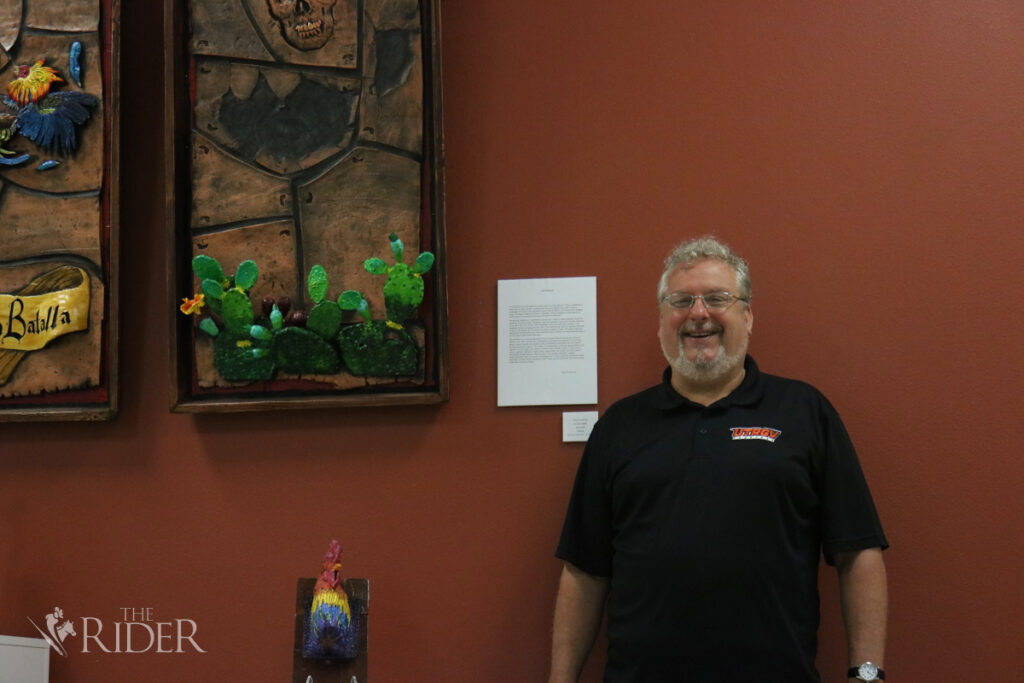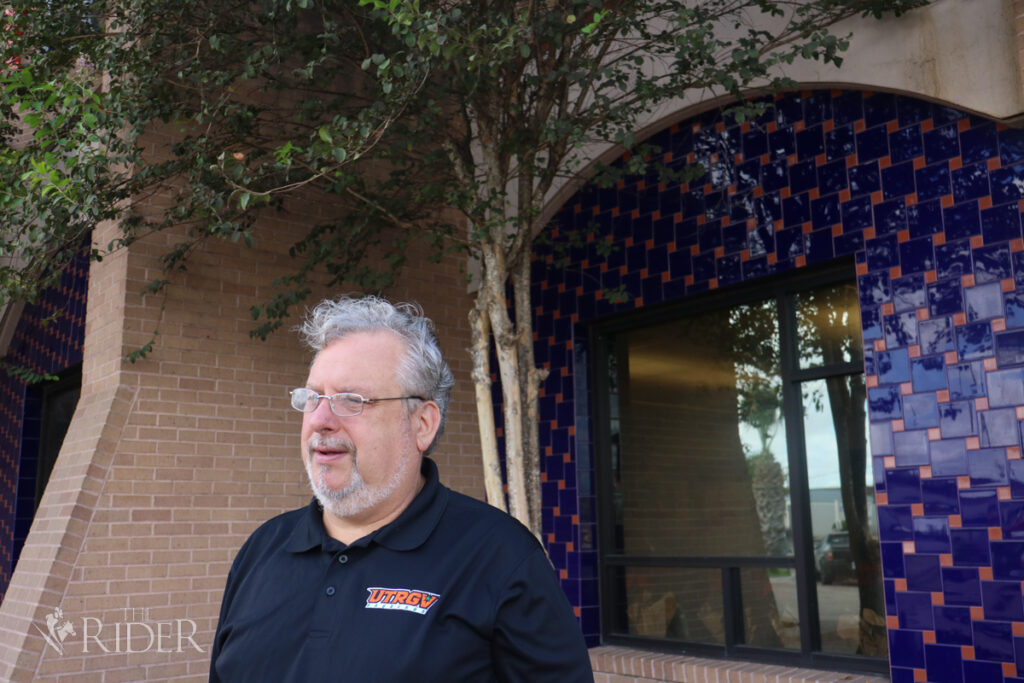
New UTRGV School of Art and Design Director Ed Pogue’s motto to art students is to get out of their comfort zones and take risks.Pogue practices what he preaches and took a leap of faith by deciding to take the position of director with his first day being July 15.
Coming from a smaller institution as the chair of the department of Art and Digital Media and interim dean at Bethany College Kansas, which he worked at for 23 years, Pogue said it feels great to be named the new director.
He said he knew it would be a challenge trying to get acclimated to the community and learning the way things operate at UTRGV.
“I would hope the art students and the faculty would know that … I’m here because I care,” Pogue said. “There is not always going to be a wonderful experience. … You have to participate in negative experiences and things that are uncomfortable as part of this role in this position. But I hope that students and faculty know that I care. … I want these programs to be successful. I want this school to be successful. I want to have recognition for the great work that we’re doing and that is my goal.”
A native of northern Arkansas, he attended Arkansas State University for his Bachelor’s of Fine Arts degree in 1985 and then attended Southern Illinois University in Carbondale where he received his Master’s of Fine Arts degree in 1989.
Pogue’s primary research and artwork is oriented around sculptures within public and intimate spaces, and the use of 3D technologies. His artwork has been exhibited in Utah, Tennessee, California, New York and Illinois.
Pogue’s experience as assistant director of the Sculpture Center at the Academy of Art University in San Francisco and director of the California Sculpture Center from 1994 to 1999 prepared him for his position at UTRGV.
“I haven’t worked with the numbers that [UTRGV] has here,” he said, “More faculty, more students, … more paperwork to push through and dealing with more concerns and issues but … I’ve pretty much experienced everything.”
He said he is prepared to work at a Hispanic-serving institution like UTRGV due to his previous employment at College of the Desert, a community college in southern California, from 1989 to 1993.

“I grew up in a small community in the middle of a cotton field,” Pogue said. “My first job was at 6 years old and I picked cotton with my mom. So, I know what it’s like to work in the hot sun … so I can relate to students who have that as a background. But I think, also, my experiences in the urban environment has prepared me to work with students … from a different situation in their home life and either live in an urban environment or a large community.”
Pogue visited both campuses during the interview process last March and said he was impressed with how engaged the students were and with the credentials of the faculty.
He responded to students’ questions and concerns about the logistics of having two campuses.
“The [Rusteberg Art Gallery] in Brownsville, it’s no secret … it’s just not adequate,” Pogue said. “This does not work. We’re in a situation where we’re working with it but I think everyone understands that. And, so, to work on the possibility of something new, something different that could help those students in Brownsville, I think would be great.”
Asked what his major goal for his first year will be, Pogue replied getting accreditation from the National Association of Schools of Art and Design (NASAD).
He said the School of Art and Design applied for NASAD membership in August 2021 and is hoping to achieve accreditation when the organization evaluates the school in March 2023.
“[NASAD] will document a facility that’s not functional,” Pogue said. “They’ll document too many students in the classroom … and then, they’ll take another look at that evaluation and if there’s no kind of clear [strategic] plan to alleviate that, they will take the accreditation away. So, there’s a little emphasis, some pressure, that’s put on the institution to fund and to help the program. And I see here that the institution is really concerned about art.”
Pogue said he believes there are also unique opportunities for fine arts and visual arts to have a striking impact in the communities around UTRGV.
“We need to have a larger presence,” he said. “Like when you drive down this street, if you don’t see the letters on the building, you don’t know what this building is. That’s something that needs to be worked on … getting some public art out, working with graduate students and undergraduates.”
In his first month of the position, Pogue said his perception is that most of the students are from the Rio Grande Valley.
“There’s some areas [in the Valley] that need to be revitalized and I think the visual arts, working with those communities, is an avenue to be able to do that,” Pogue said. “So, from our longer-term vision, that’s one of my goals.”
Pogue hopes to host at least two town halls with students per semester to go over any issues, situations or concerns, so he can directly work with students on solutions. As of press time, there is no set date for the first town hall.





